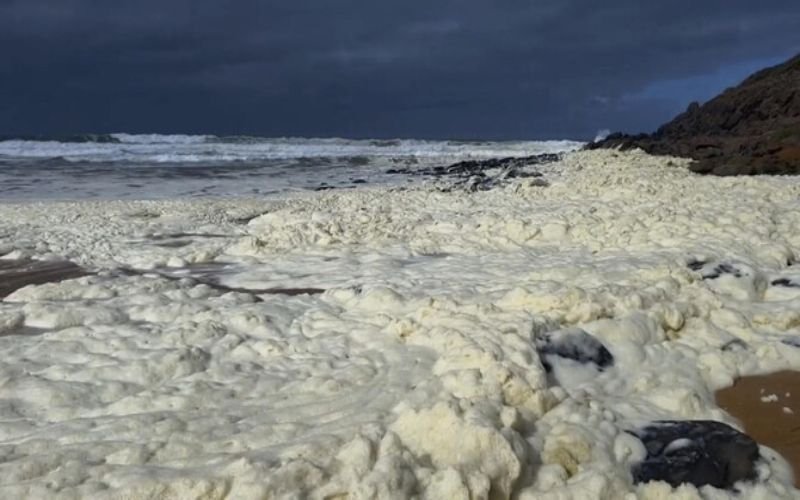- South Australian beaches closed after dead fish and toxic foam washed ashore.
- Surfers reported health issues, including sore eyes and coughing.
- Microalgal bloom caused by unusual weather suspected as the cause.
- Water samples collected for analysis; results expected by week’s end.
- Waitpinga and Parsons Beach remain closed to the public for safety.
On Monday, two popular beaches in South Australia, Waitpinga and Parsons Beach, were closed. This came after reports of dead fish and unusual off-white foam washing ashore. Surfers in the area also experienced sore eyes, sore throats, and coughing after coming into contact with the water.
Authorities suspect that a microalgal bloom, triggered by recent weather conditions, is responsible. The Department for Environment and Water confirmed the closures on Monday, following a “fish mortality event.” While the beaches remain closed for now, the department reassured the public they would reopen once it’s safe.
Sam Gaylard, the principal scientific officer at the South Australian Environment Protection Authority (EPA), shared his concerns. He stated, “It is very concerning.” He further explained, “At this time of year, we do occasionally get isolated blooms, but something of this scale is definitely a little bit unusual.”
Microalgae, microscopic single-celled organisms, are known to bloom under certain conditions. Gaylard explained that the extended period of hot and dry weather, low winds, and low tides created the perfect environment for algae to thrive. As the algae decayed, it produced the foam seen along the coastline.
Health Risks to Surfers
Local surfers are raising concerns after experiencing illness while surfing at Waitpinga on Saturday. Anthony Rowland shared his experience online, saying, “While we were out there, we started coughing.” He and his companions weren’t alone in feeling unwell.
Rowland added, “Lots of people reached out – so many people have said they’ve had exactly the same symptoms.” Complaints included sore throats and eye irritation after prolonged exposure. These symptoms align with what health officials expect from toxins produced by microalgae.
Ongoing Investigation and Sample Analysis
Marine scientists collected water samples from the foam on Monday to investigate further. The foam is thought to be a byproduct of toxic algae decay. Gaylard mentioned it could take until the end of the week to identify the responsible organism.
“At the moment, we’re not sure how long this will last,” Gaylard said. He noted that the situation would be closely monitored as more information became available. The surge in swell over the weekend may have also contributed to spreading the foam.
Increased turbulence from the swell can break up algae and generate more foam. Local authorities are closely monitoring the situation and will provide updates when necessary. The closure of Waitpinga and Parsons Beaches reminds us of the unpredictable nature of marine ecosystems.
As scientists continue their investigation, the public is urged to stay informed and avoid contact with the water. Gaylard assured that the situation would be handled carefully, and the beaches would reopen when it is safe for visitors.


